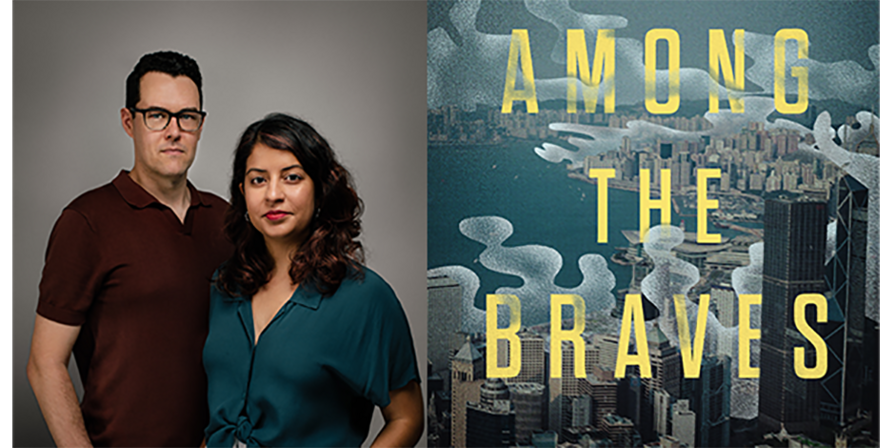Originally published by US-China Today on September 26, 2020. Written by Valerie Wu.
The following biography is drawn from the Stanford Program on International and Cross-cultural Education.
Dr. Tanya Lee is the instructor for the China Scholars Program. She most recently served as Outreach Coordinator for Duke University’s Asian/Pacific Studies Institute. From 2006 through 2009, she was Program Director of the Asian Educational Media Service at the University of Illinois at Urbana-Champaign, a national outreach program facilitating the use of film and media resources for teaching and learning about Asia in K–16 education. Earlier, she taught English for two years at Yunnan University’s Foreign Language Secondary School in Kunming, China. She has also taught English as a Second Language in Seoul, Korea; Taipei, Taiwan; and Seattle, Washington.
Lee completed her Ph.D. in ethnomusicology in 2011 from University of Illinois at Urbana-Champaign, with specializations in American folk music and East Asian music. Her dissertation, a history and ethnography of a major community music school in Chicago (Music as a Birthright: Chicago’s Old Town School of Folk Music and Participatory Music Making in the 21st Century), studies the meanings of music in the lives of amateur music-makers, in the context of the American folk music revival. She is currently rewriting it as a book for a general readership.
Q: For those who are not familiar with the China Scholars Program (CSP), can you provide a brief introduction for the program? How long has it existed, how is it structured, and what kinds of students are drawn to participating in the program?
We [The Stanford Program on International and Cross-Cultural Education] started CSP up in Fall of 2017, and the Reischauer Scholars Program had been running for almost fifteen years at that point. SKSP, the Sejong Korea Scholars Program, had been running for a few years. Those were going great, and they had established a working structure. It just made sense that we would have one on China. And we assumed, correctly, that there would be interest.
The China Scholars Program is aimed at U.S.-based high school students, just like RSP and SKSP, and in particular, students who are very scholarly inclined and highly intellectually ambitious, and with a passion for international studies and China specifically. The course is semester-long and we tend to cover contemporary China, a range of important issues that affect China and specifically the U.S.-China relationship today. For almost all topics that we cover, we have a guest speaker join us from the Stanford faculty or another major research university. We do a wide range of multidisciplinary readings on each theme or topic that we cover, and the students put a lot of work into a major research paper at the end.
Q: How does the CSP either supplement or substitute curriculum on modern China taught in American high schools? What are your overall thoughts on the strengths or deficiencies of public school curriculums about China?
[Public school curriculums about China are] highly deficient. Every year at the beginning of the class’ first session, I always ask [my students]: “How many of you have studied China in your regular social studies classes?” And usually I also ask specifically about modern China. This year out of twenty, three students raised their hands. Out of twenty students scattered across the entire country. That’s horrifying, really. China is almost one-fifth of the world’s population. It’s generally thought to be the second most powerful nation in the world. How are we treating it like a footnote in our education? How is this a few pages in the textbook? This makes no sense except in terms of ‘this is how we’ve always done it.’
Since CSP is targeted at a specific kind of student, it’s not much of a substitute; we don’t use a high school curriculum. I teach at a college level. [The Stanford Program on International and Cross-Cultural Education] has a lot of really excellent curriculum materials to use in teaching many cultures, including China, which I would recommend to any high school teacher. But I don’t think that CSP does much in terms of anybody’s high school curriculum. It does something for specific individual students who have this kind of capability and ambition to learn at this level; it helps those students. But there is a lot of material out there that high school teachers can use and should use at the high school level.
Q: What educational and logistical considerations did you have in mind while designing a completely online curriculum about China for American students? What advice would you give to instructors currently adapting in-person teaching about China to a virtual format?
[CSP was] an online course from the beginning. You’re supposed to do online education just like any other course: you design the course to fit the medium or environment in which you’ll be teaching. Now, at least teachers have had a whole summer to wrap their heads around this. People have a better handle on how to do [online education]. There I’ve been more helpful because I do have a lot of experience writing discussion boards and getting people to participate, so I try to give tips where I can.
The other way that my course is different from a lot of people’s courses, whether we’re talking about high school or college, is the kind of students I have. The China Scholars Program’s students are just absolutely extraordinary. The program is selective; I don’t accept everybody, not by a long shot. But I don’t ever have trouble selecting a cohort of around twenty students who are one hundred percent committed to this, doing whatever it takes to understand China at the level that I’m asking. …That’s just an extraordinary gift, to be teaching this kind of student.
Q: What are some of the topics or issues that CSP has addressed in the past? In your opinion, how does studying these specific topics inform a cross-cultural understanding of contemporary China?
That’s where most of my work in curriculum design comes in, is choosing the topics: how we’re going to frame them and who we’re going to have come in to talk about them. Sometimes it goes the other way around; sometimes I [start with] a ‘who’. An example of that would be Scott Rozelle, the co-director of the Rural Education Action Program, which is at Stanford but is also partnered with Chinese universities and NGOs, and they actually affect policy in the Chinese government. It’s a really unique program, and he’s an extraordinary person to get to talk to. Therefore, we always cover urban-rural inequality and urban-rural migration.
Because of the way [Scott Rozelle] does [the module], I’m one hundred percent convinced that this is absolutely essential to understanding China today. I’ve seen not only what he does but how students respond, and you can see a difference in how the students conceive of what China is before and after Rozelle. There are [two examples of people] who really pivot the students’ approach on how they’re going to understand China. One is Scott Rozelle on rural inequality, because we think of China as rising and wealthy, and Scott Rozelle shows us the different side of that. The other is Darren Byler, who has come quite a few times now to talk about the Uighur oppression in Xinjiang. He’s able to talk from a firsthand perspective and to have that direct witness account as well as the scholarly context for it, has really changed students’ perceptions.
Q: The Stanford Program on Cross-Cultural Education also offers a virtual (new) course for students from China to learn about the Silicon Valley. What are some of the ways that this program and CSP overlap in terms of creating conversations about the US-China relationship, and how do they differ?
The course [in question] hasn’t started yet; it starts at the end of September. We have the students — they’re enrolled. My students are very excited about it. There’s no question that we’re going to connect those two cohorts of students, … but it’s all still in the experimental stage. We’re going to do something where they have more casual social contact, and we’re going to do something where we have a session together with a common topic. But that’s where we’re at, so far.
Q: From your knowledge, have alumni gone on to pursue China-related careers? What do you hope is the overall impact of CSP for students?
[My students] are all still in college, so I can’t say what they’ve done past there. I do know that there are a lot of them studying China. I have students at USC, Harvard, a few at Stanford, MIT, Boston University. I really do wonder what they’re going to do, and I’m really excited to find out. Even if they’re not in a China-related field, I feel very gratified, like I’ve done something worthwhile, in giving them this aspect of their high school education before they even start college. … I do think that it will color the way they look at the world, the way that they have had the opportunity to think about global issues from more than just a US-centric perspective.
Maybe they’re still going to take a US-centric perspective, but they are going to understand that there are other ways of framing these issues, that there are other interests and priorities at play, and that there are other educational backgrounds that people are drawing on to approach these issues. … Even if a lot of my alums do end up in medicine, science, or things that don’t seem to be related [to China], I actually feel greater satisfaction over the ones who may go off in other directions over the ones who do end up studying international relations [or Asian Studies] — they would have found their way [to China] anyway. But the ones who go off in other directions will carry this perspective and experience with them.
This interview was edited and condensed for length and clarity. The interviewer is an alumnus of the Stanford China Scholars Program.
Cover image: Trey Ratcliff on Flickr
Feature image: Robbie Shade on Flickr




